Medicine for chronic atrophic gastritis: a systematic review, meta- and network pharmacology analysis
- PMID: 38170849
- PMCID: PMC10769149
- DOI: 10.1080/07853890.2023.2299352
Medicine for chronic atrophic gastritis: a systematic review, meta- and network pharmacology analysis
Abstract
Purpose: The aim of this study is to determine the effectiveness and reliability of adding traditional Chinese medicine (TCM) in the clinical intervention and explore mechanisms of action for chronic atrophic gastritis (CAG) through meta- and network pharmacology analysis (NPAs).
Methods: A predefined search strategy was used to retrieve literature from PubMed, Embase database, Cochrane Library, China National Knowledge Infrastructure (CNKI), Chinese BioMedical Literature Database (CBM), Wan Fang Data and China Science and Technology Journal Database (VIP). After applying inclusion and exclusion criteria, a total of 12 randomized controlled trials (RCTs) were included for meta-analysis to provide clinical evidence of the intervention effects. A network meta-analysis using Bayesian networks was conducted to observe the relative effects of different intervention measures and possible ranking of effects. The composition of the TCM formulation in the experimental group was analysed, and association rule mining was performed to identify hub herbal medicines. Target genes for CAG were searched in GeneCards, Online Mendelian Inheritance in Man, PharmGKB, Therapeutic Target Database and DrugBank. A regulatory network was constructed to connect the target genes with active ingredients of the hub herbal medicines. Enrichment analyses were performed using the Gene Ontology (GO) and the Kyoto Encyclopedia of Genes and Genomes (KEGG) to examine the central targets from a comprehensive viewpoint. Protein-protein interaction networks (PPINs) were constructed to identify hub genes and conduct molecular docking with differentially expressed genes (DEGs) and corresponding active molecules.
Results: A total of 1140 participants from 12 RCTs were included in the statistical analysis, confirming that the experimental group receiving the addition of TCM intervention had better clinical efficacy. Seven hub TCMs (Paeonia lactiflora, Atractylodes macrocephala, Pinellia ternata, Citrus reticulata, Codonopsis pilosula, Salvia miltiorrhiza and Coptis chinensis) were identified through association rule analysis of all included TCMs. Thirteen hub genes (CDKN1A, CASP3, STAT1, TP53, JUN, MAPK1, STAT3, MAPK3, MYC, HIF1A, FOS, MAPK14 and AKT1) were obtained from 90 gene PPINs. Differential gene expression analysis between the disease and normal gastric tissue identified MAPK1 and MAPK3 as the significant genes. Molecular docking analysis revealed that naringenin, luteolin and quercetin were the main active compounds with good binding activities to the two hub targets. GO analysis demonstrated the function of the targets in protein binding, while KEGG analysis indicated their involvement in important pathways related to cancer.
Conclusions: The results of a meta-analysis of 12 RCTs indicate that TCM intervention can improve the clinical treatment efficacy of CAG. NPAs identified seven hub TCM and 13 target genes associated with their actions, while bioinformatics analysis identified two DEGs between normal and CAG gastric tissues. Finally, molecular docking was employed to reveal the mechanism of action of the active molecules in TCM on the DEGs. These findings not only reveal the mechanisms of action of the active components of the TCMs, but also provide support for the development of new drugs, ultimately blocking the progression from chronic gastritis to gastric cancer.
Keywords: Chronic atrophic gastritis; meta-analysis; molecular docking; network pharmacology analysis; traditional Chinese medicine.
Conflict of interest statement
No potential conflict of interest was reported by the author(s).
Figures


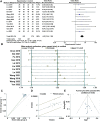
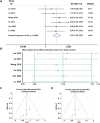
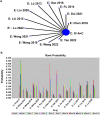


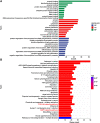


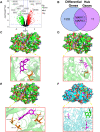
References
Publication types
MeSH terms
Substances
LinkOut - more resources
Full Text Sources
Research Materials
Miscellaneous
